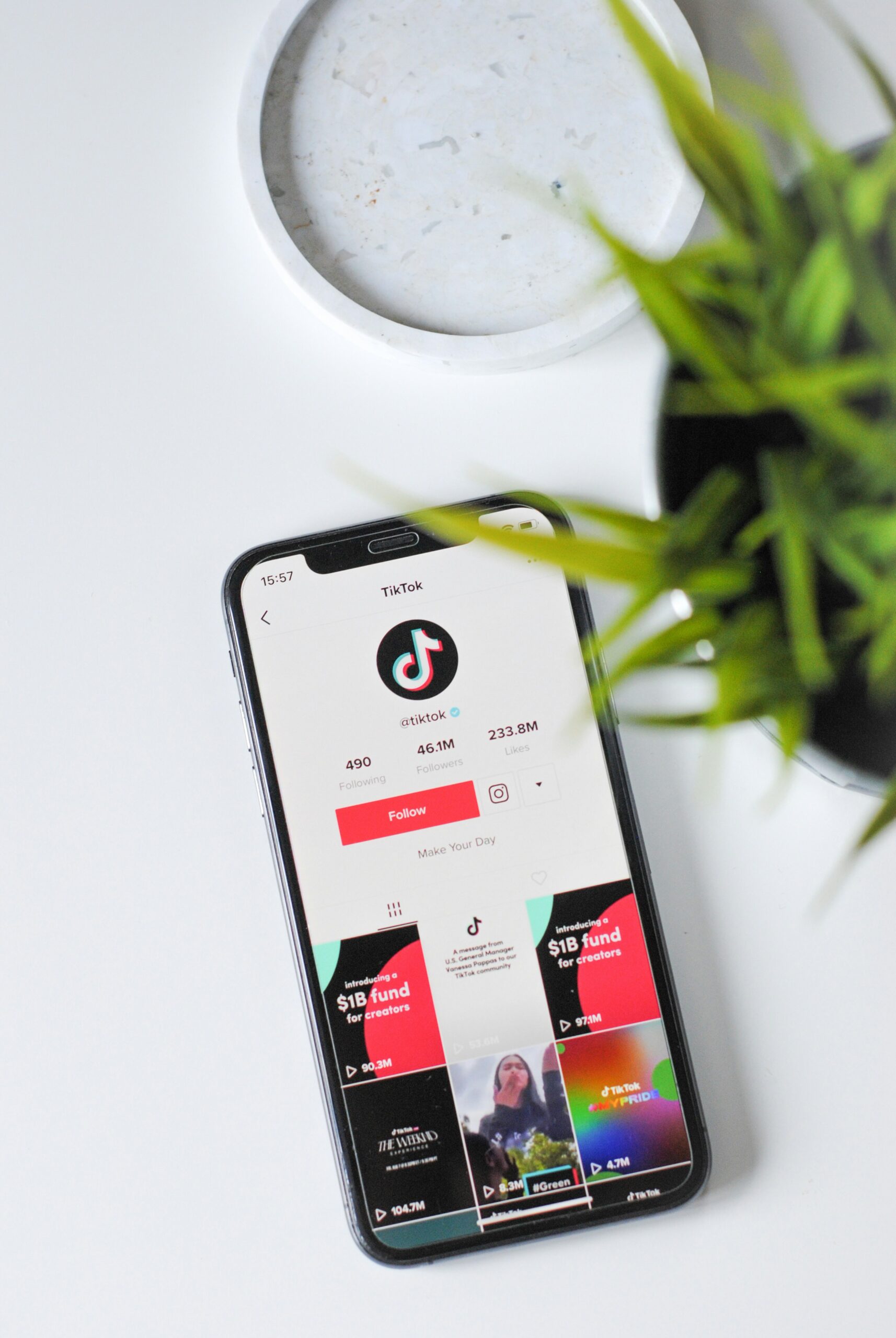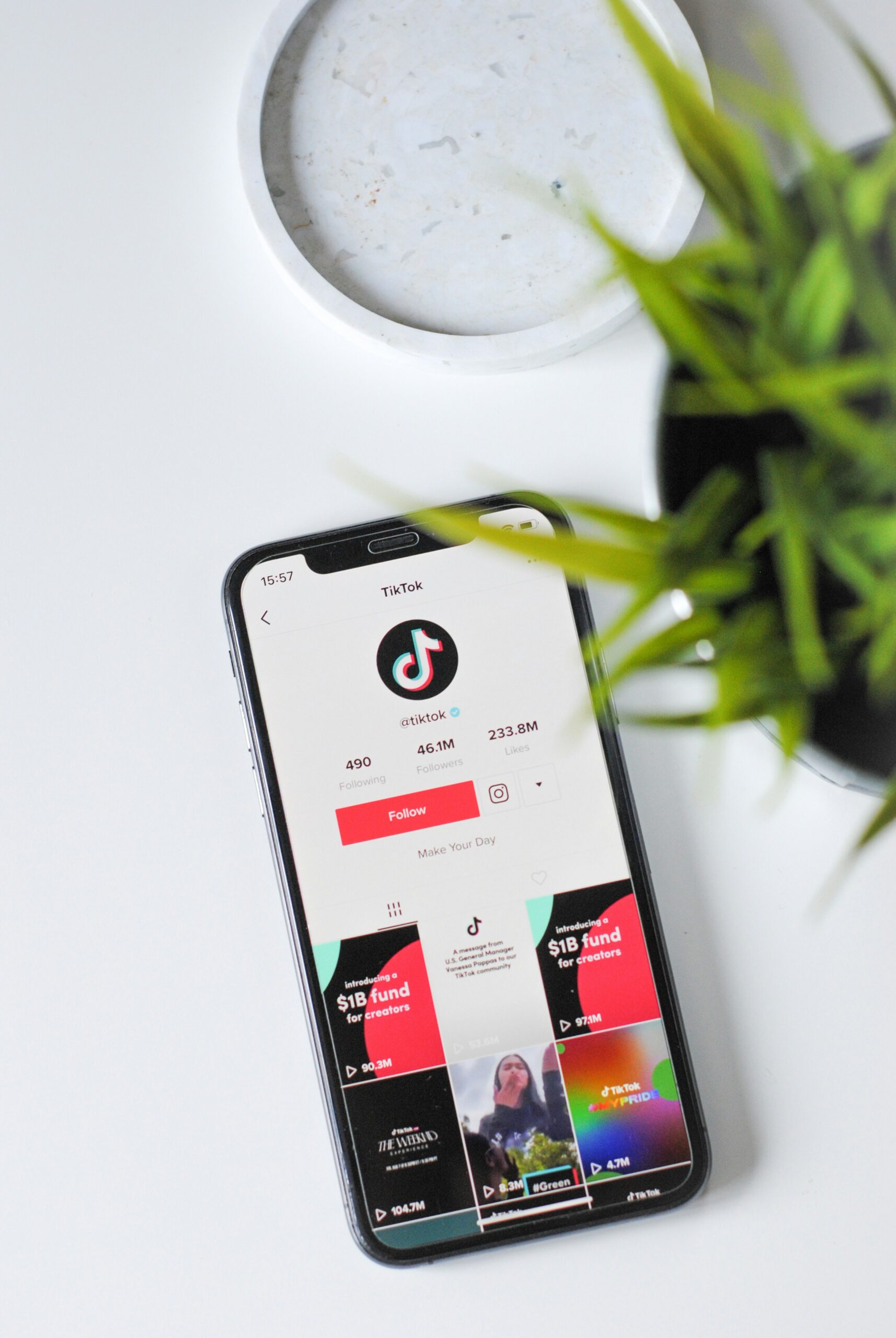
TikTok Ads 101: A Comprehensive Guide to Advertising on the Platform
Introduction to TikTok Advertising
TikTok has rapidly emerged as a dominant player in the social media landscape, captivating a diverse user base with its unique blend of short-form video content and engaging features. Initially popular among Gen Z, TikTok has broadened its appeal, attracting users from various age groups and demographics. This expansion presents a compelling opportunity for advertisers looking to tap into a dynamic and highly engaged audience.
One of the key factors that make TikTok an attractive platform for advertising is its sophisticated algorithm. Unlike traditional social media platforms that rely heavily on user connections to disseminate content, TikTok’s algorithm prioritizes content discovery. It analyzes user behavior meticulously, ensuring that videos reach the most relevant and interested audiences. This capability significantly enhances the chances of content going viral, thereby amplifying brand visibility and engagement.
Engagement rates on TikTok are notably high, surpassing those of many other social media platforms. Users are not just passive viewers; they actively participate by liking, sharing, and creating content, which fosters a vibrant and interactive community. For advertisers, this means that well-crafted ads have the potential to not only reach but also resonate with a wide audience, driving meaningful interactions and conversions.
Furthermore, TikTok’s global reach cannot be understated. With millions of users worldwide, the platform offers advertisers a unique opportunity to connect with a global audience. This diverse user base includes various cultural, social, and economic backgrounds, allowing brands to tailor their campaigns to different markets effectively. By leveraging TikTok’s wide reach and robust targeting options, advertisers can craft messages that appeal to specific segments, enhancing the overall impact and relevance of their campaigns.
Overall, TikTok’s innovative algorithm, high engagement rates, and extensive global reach make it a highly attractive platform for advertisers. By understanding and utilizing these unique features, brands can create powerful advertising campaigns that resonate with a broad and diverse audience.
“`html
Types of TikTok Ads
TikTok offers a diverse range of advertising options to cater to different marketing objectives. Understanding these ad types is essential for crafting a successful campaign. The primary ad formats on TikTok include In-Feed Ads, Branded Hashtag Challenges, Branded Effects, and TopView Ads. Each format has its unique characteristics, placement, and optimal use cases.
In-Feed Ads: These ads appear in the user’s “For You” feed, blending seamlessly with native content. They can be up to 60 seconds long and support various call-to-action (CTA) buttons, such as “Shop Now” or “Download.” In-Feed Ads are ideal for driving traffic to a website or app. For instance, the popular fashion brand Guess used In-Feed Ads to promote their new denim line, resulting in high engagement and increased sales.
Branded Hashtag Challenges: This ad format encourages user-generated content by inviting users to participate in a challenge. Brands create a unique hashtag and promote it via a combination of in-feed videos and banner ads. Branded Hashtag Challenges are perfect for enhancing brand awareness and fostering community engagement. A notable example is the #EyesLipsFace challenge by e.l.f. Cosmetics, which generated billions of views and thousands of user-created videos.
Branded Effects: These ads allow brands to create custom filters, stickers, and special effects that users can apply to their videos. Branded Effects can be combined with other ad formats to amplify their reach and engagement. This format is particularly effective for brands looking to boost user interaction and create a memorable brand experience. An example of successful Branded Effects is Pepsi’s campaign, which featured a custom filter that users could use to simulate drinking a Pepsi, leading to widespread use and brand recall.
TopView Ads: These ads are the first thing users see when they open the app, providing maximum visibility. They can be up to 60 seconds long and include sound, making them perfect for capturing user attention right from the start. TopView Ads are best suited for major announcements, product launches, or significant promotional events. A successful example is Apple’s TopView Ad for the release of the iPhone 12, which garnered millions of impressions and heightened interest in the new product.
By leveraging the unique strengths of each ad format, brands can effectively engage their target audience on TikTok, driving both brand awareness and conversions.
“`
Creating Effective TikTok Ad Campaigns
Creating a successful TikTok ad campaign involves a strategic approach that begins with setting clear objectives. Whether your goal is to boost brand awareness, drive traffic to your website, or increase sales, having a well-defined objective provides direction and helps measure the effectiveness of your campaign. It’s essential to outline what you aim to achieve before diving into content creation.
Understanding your target audience is another crucial step. TikTok’s user base is diverse, with a significant portion of younger demographics. Utilize TikTok’s analytics and insights tools to gather data on user behavior, preferences, and trends. This information will help tailor your content to resonate with your intended audience, making your campaigns more effective.
Crafting engaging and authentic content is the heart of any TikTok ad campaign. The platform thrives on creativity and authenticity, so it’s vital to produce content that feels genuine rather than overly polished. Utilize TikTok’s various creative tools, such as filters, effects, and music, to enhance your videos. Experiment with different formats like challenges, duets, and tutorials to keep the content fresh and appealing.
Storytelling is a powerful technique on TikTok. Create narratives that captivate viewers’ attention from the start. Whether you’re telling the story of your brand or highlighting the benefits of your product, make sure it’s compelling and relatable. Short, concise storytelling works best on this platform, where content needs to grab attention quickly.
Leveraging trends and collaborating with influencers can significantly amplify the reach of your ad campaign. Participate in trending challenges and use popular hashtags to increase visibility. Influencers who align with your brand can help create authentic connections with their followers. Their endorsement can lend credibility and drive engagement, making your campaign more effective.
By following these essential steps—setting clear objectives, understanding your audience, crafting authentic content, telling engaging stories, leveraging trends, and collaborating with influencers—you can create TikTok ad campaigns that not only capture attention but also achieve your marketing goals.
Budgeting and Bidding Strategies
When it comes to advertising on TikTok, understanding how to manage your budget and select appropriate bidding strategies is crucial for maximizing your campaign’s effectiveness. The platform offers several models to accommodate different goals and financial constraints, including Cost Per Click (CPC), Cost Per Thousand Impressions (CPM), and Cost Per View (CPV).
Setting a budget is the first step in planning your TikTok ad campaign. It’s advisable to start with a modest budget to test various strategies and see what works best for your brand. TikTok allows for daily and total budget settings, providing flexibility in how you allocate your resources. A daily budget ensures that your spending is spread evenly over the campaign duration, while a total budget gives you control over the entire campaign lifecycle.
Among the bidding strategies, the CPC model is ideal for campaigns focused on driving traffic to a website or landing page. With CPC, you are charged each time a user clicks on your ad. This model is particularly effective for direct response campaigns where clicks translate directly into conversions.
The CPM model charges advertisers for every thousand impressions their ad receives. This strategy is beneficial for increasing brand awareness since you pay for the number of times your ad is displayed, regardless of user interaction. CPM is suitable for campaigns aimed at reaching a broad audience and enhancing visibility.
Lastly, the CPV model is used when the goal is to maximize video views. Advertisers are charged each time a user views their video ad. This model is effective for video-centric campaigns and can be particularly useful for storytelling or showcasing product features in an engaging format.
To optimize your budget and bidding on TikTok, it is essential to continuously monitor your campaign performance. Use TikTok’s analytics tools to track key metrics and adjust your strategies accordingly. Experiment with different bidding models and budgets to find the best combination that delivers a high return on investment (ROI). By carefully managing your budget and selecting the right bidding strategy, you can enhance the effectiveness of your TikTok advertising campaign and achieve your marketing objectives.
Targeting and Analytics
TikTok offers a range of targeting options that allow advertisers to reach their desired audience with precision. Understanding these targeting capabilities is crucial for maximizing the effectiveness of your advertising campaigns on the platform. TikTok’s targeting options encompass demographic targeting, interest-based targeting, and behavioral targeting, enabling advertisers to tailor their messages to specific groups of users.
Demographic targeting allows advertisers to filter audiences based on factors such as age, gender, and location. This ensures that your ads are seen by the most relevant demographic groups, increasing the likelihood of engagement and conversions. Interest-based targeting, on the other hand, focuses on users’ interests and activities on the platform, enabling you to reach individuals who are more likely to be interested in your products or services. Behavioral targeting takes this a step further by considering users’ past behaviors, such as their interactions with similar content and their activity patterns, to deliver highly relevant ads.
To measure the success of your TikTok ad campaigns, it’s essential to utilize the platform’s robust analytics tools. TikTok provides comprehensive insights into various performance metrics, including engagement rates, views, and conversions. Engagement rates indicate how users are interacting with your ads, such as likes, comments, and shares. Views provide a quantitative measure of how many times your ad has been watched, while conversion metrics track actions taken by users after viewing your ad, such as clicks, sign-ups, or purchases.
Leveraging these analytics tools allows advertisers to gain a deeper understanding of their campaign performance and make data-driven decisions. By analyzing key metrics, you can identify which aspects of your campaign are working well and which may need improvement. For instance, if your engagement rates are high but conversions are low, it may indicate that while users find your ad interesting, they are not compelled to take further action. This insight can help you refine your ad creative, targeting strategy, or call-to-action in future campaigns to achieve better results.
Compliance and Best Practices
When advertising on TikTok, adhering to the platform’s guidelines and best practices is essential to ensure a successful campaign. Compliance with TikTok’s advertising policies involves several key aspects, including avoiding misleading content, respecting user privacy, and creating ad creatives that resonate well with the platform’s diverse audience.
Firstly, advertisers must avoid misleading content. TikTok’s policies strictly prohibit false claims, deceptive practices, or any content that could mislead users. This includes ensuring that all promotional claims are substantiated and truthful. Misleading ads not only violate TikTok’s policies but can also harm brand reputation and lead to penalties or bans from the platform.
User privacy is another critical area of compliance. TikTok requires advertisers to respect the privacy and data of its users. This means obtaining appropriate consent for data collection and adhering to all relevant data protection regulations, such as GDPR or CCPA, depending on the target audience’s location. Transparent privacy practices help build trust with users and demonstrate a brand’s commitment to safeguarding personal information.
Moreover, ad creatives must be suitable for TikTok’s audience, which is predominantly young and highly engaged. Creatives should be visually engaging, culturally sensitive, and appropriate for a general audience. Ads that feature offensive or inappropriate content can result in negative user feedback and potential removal by TikTok. Understanding the platform’s community guidelines and tailoring content to fit the platform’s unique style can enhance the effectiveness of advertising campaigns.
Maintaining brand integrity is vital for long-term success on TikTok. Brands should strive for authenticity and transparency in their advertising efforts. Engaging with the TikTok community in a genuine manner fosters trust and encourages positive interactions. This includes responding to user comments, participating in trends, and consistently delivering value-driven content.
Overall, by adhering to TikTok’s advertising policies and implementing best practices, brands can create compelling ads that resonate with users, build trust, and achieve their marketing objectives on the platform.
Case Studies and Success Stories
TikTok has rapidly emerged as a potent tool for brands aiming to engage with a younger, dynamic audience. Through a series of case studies, we can uncover how various companies have harnessed the platform’s unique features to meet their marketing objectives effectively. These cases illustrate the strategic application of TikTok ads, from conception to execution, offering valuable insights into best practices and creative approaches.
Case Study 1: Gymshark
Gymshark, a fitness apparel brand, sought to increase brand awareness and drive sales among Gen Z and millennial consumers. They employed a mix of in-feed ads and branded hashtag challenges, leveraging popular fitness influencers to create engaging content. The #gymshark66 challenge encouraged users to share their workout routines, generating over 45 million views. This campaign not only boosted brand visibility but also led to a 10% increase in sales within the campaign period.
Case Study 2: Chipotle
Chipotle aimed to connect with younger audiences and promote their menu items through TikTok. The brand launched the #GuacDance challenge, inviting users to showcase their dance moves to celebrate National Avocado Day. The challenge went viral, amassing over 250,000 video submissions and 430 million video starts in just six days. As a result, Chipotle experienced its highest-ever digital sales day, proving the efficacy of engaging, user-generated content on TikTok.
Case Study 3: Fenty Beauty
Fenty Beauty, founded by Rihanna, used TikTok to launch a new product line. The brand focused on collaborating with beauty influencers to create authentic, tutorial-style content. Utilizing in-feed video ads, Fenty Beauty showcased the versatility of their products, which resonated well with the platform’s audience. The campaign generated over 10 million impressions and significantly boosted both online and in-store sales, highlighting the importance of influencer partnerships in TikTok advertising.
These success stories demonstrate that with the right ad strategies and creative approaches, TikTok can be an invaluable platform for achieving diverse marketing goals. Each case study provides a template for leveraging TikTok’s unique capabilities, from influencer collaborations to user-generated content and viral challenges, ensuring brands can effectively reach and engage their target audiences.
Future Trends in TikTok Advertising
As TikTok continues to dominate the social media landscape, understanding the future trends in TikTok advertising is crucial for brands aiming to maintain their competitive edge. One of the most significant emerging trends is the rise of social commerce. TikTok’s seamless integration of shopping features within the app is revolutionizing how users discover and purchase products. This trend not only enhances user experience but also provides brands with a direct pathway to convert viewers into customers. Expect to see more in-app shopping experiences as TikTok refines its e-commerce capabilities.
Another groundbreaking trend is the integration of augmented reality (AR) in ads. AR technology allows for highly interactive and engaging advertisements, providing users with immersive experiences that traditional ads can’t match. Brands are increasingly leveraging AR filters and effects to create memorable campaigns that resonate with TikTok’s young, tech-savvy audience. As the technology becomes more accessible, we can anticipate a surge in AR-powered advertising content.
Moreover, TikTok is continuously evolving, introducing new features and tools that can reshape the advertising landscape. For instance, the platform’s recent foray into live-streaming commerce presents a dynamic way for brands to engage with consumers in real-time. Additionally, TikTok’s algorithm improvements and advanced analytics tools will offer advertisers more precise targeting and insights, enabling more effective ad strategies.
Predictions about the future of TikTok marketing indicate a shift towards more personalized and data-driven advertising. Brands that harness the power of AI and machine learning to analyze user behavior and preferences will be better positioned to deliver relevant content to their target audiences. Furthermore, as regulatory frameworks around data privacy tighten, brands will need to navigate these changes while maintaining transparency and trust with their consumers.
In conclusion, the evolving landscape of TikTok advertising presents numerous opportunities for brands to innovate and connect with audiences in novel ways. By staying informed about these emerging trends and adapting their strategies accordingly, brands can ensure they remain at the forefront of this dynamic platform.


